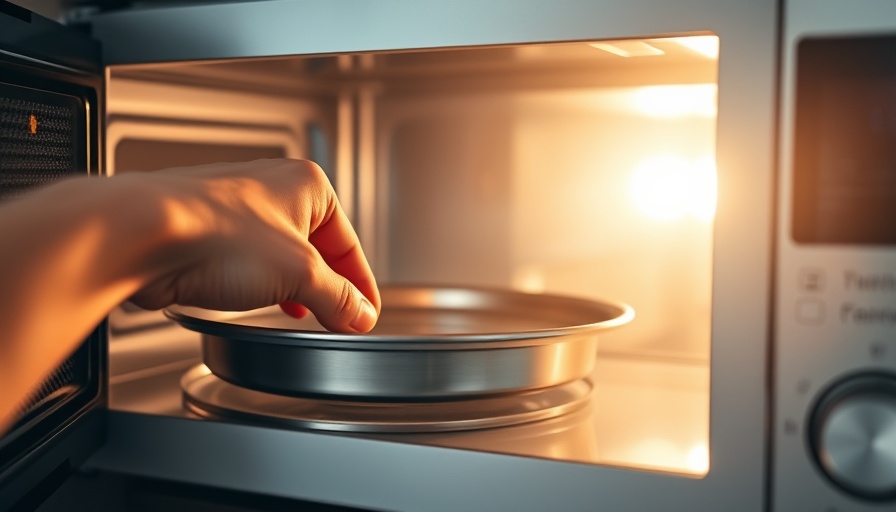
Why You Should Never Put Metal in the Microwave
Most homeowners know that placing metal in the microwave can lead to disastrous consequences. But why exactly does this happen? And what are some safe alternatives? Understanding the science behind microwaves can prevent accidents and enhance your kitchen safety.
The Science of Microwaves
Microwaves cook food by emitting energy that excites water molecules in the food. When metal enters the equation, it reflects microwaves instead of absorbing them. In simpler terms, it's like shining a flashlight into a mirror: instead of passing through, the light just bounces back. This reflection can lead to sparking, which is not only alarming but can damage both your microwave and the offending metal.
Common Challenges and Risks
Accidentally putting a spoon or a metal dish in the microwave creates a kaleidoscope of sparks, which can lead to fire. As explained by appliance repair expert Matthew Morrison, you'll first notice tiny blue or white sparks followed by a frustrating popping or crackling sound. If you ignore it, the heat intensifies, and soon you'll smell burning fabric or plastic. The microwave can experience extensive damage, rendering it unsafe or unusable.
Safe Materials for Your Microwave
So what items are safe for microwaving? Generally, materials like glass and ceramic are ideal—these allow microwaves to penetrate and cook the food safely. Tempered glass dishes are particularly advantageous, as they don’t absorb heat like plastic does. You should also stay away from containers that can warp or melt, such as some types of styrofoam.
Are There Any Microwave-Safe Metals?
Interestingly, not all metals are created equal in terms of microwave safety. Certain microwave-safe trays are designed for cooking—these often feature smooth edges and thicker compositions to avoid sparking. However, thin metals can easily create issues, making it safest to maintain a blanket rule: keep metals out of the microwave whenever possible.
Best Practices for Microwaving
To ensure a stress-free microwaving experience, consider these tips:
- Stick to glass and ceramic: These materials are not only microwave-safe but they are also effective at conducting heat.
- Avoid any metallic threads: Items like dish towels may have hidden metal fibers, which can also spark.
- Watch for warning labels: Always check for any indications on cookware, ensuring they are microwave-safe.
Real-Life Anecdotes: The Dangers of Ignoring Microwave Safety
My friend Maricel, a chef, had a scary mishap with a dish towel that had a metallic thread. After a minute in the microwave, she was greeted with flashes and smoke. This heart-pounding experience serves as an unforgettable reminder of the importance of caution. It’s not enough to know; staying vigilant can prevent potential disasters.
Future Predictions: Evolving Kitchen Appliances
As technology in kitchen appliances advances, we can expect microwave designs to improve safety features, potentially reducing the risk of metal sparking. Innovations may lead to smart microwaves with built-in sensors that can detect hazardous materials. Looking ahead, homeowners can benefit from even greater kitchen safety and efficiency.
Conclusion: Empower Your Kitchen Knowledge
Understanding what materials are microwave-safe can transform your culinary experience. Not only does it prevent accidents, but it allows you to utilize your microwave more effectively. Embracing this information empowers you to make informed choices in your kitchen.
Take action! Share this article with friends and family to ensure everyone knows how to safely use a microwave. Prevention is much easier than recovery when it comes to kitchen mishaps!
 Add Row
Add Row  Add
Add 




Write A Comment